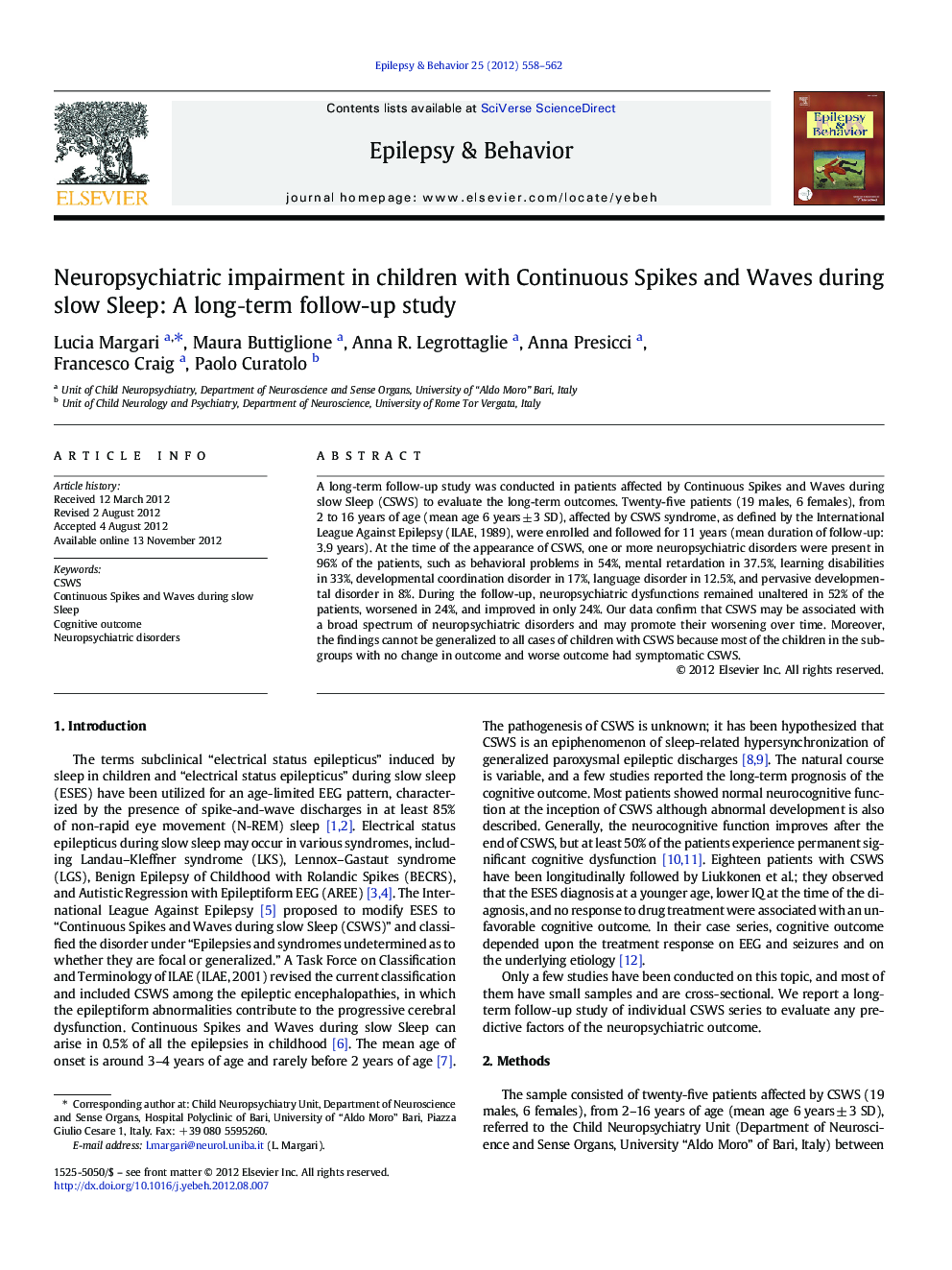| Article ID | Journal | Published Year | Pages | File Type |
|---|---|---|---|---|
| 6013828 | Epilepsy & Behavior | 2012 | 5 Pages |
A longâterm followâup study was conducted in patients affected by Continuous Spikes and Waves during slow Sleep (CSWS) to evaluate the long-term outcomes. Twenty-five patients (19 males, 6 females), from 2 to 16 years of age (mean age 6 years ± 3 SD), affected by CSWS syndrome, as defined by the International League Against Epilepsy (ILAE, 1989), were enrolled and followed for 11 years (mean duration of followâup: 3.9 years). At the time of the appearance of CSWS, one or more neuropsychiatric disorders were present in 96% of the patients, such as behavioral problems in 54%, mental retardation in 37.5%, learning disabilities in 33%, developmental coordination disorder in 17%, language disorder in 12.5%, and pervasive developmental disorder in 8%. During the follow-up, neuropsychiatric dysfunctions remained unaltered in 52% of the patients, worsened in 24%, and improved in only 24%. Our data confirm that CSWS may be associated with a broad spectrum of neuropsychiatric disorders and may promote their worsening over time. Moreover, the findings cannot be generalized to all cases of children with CSWS because most of the children in the subgroups with no change in outcome and worse outcome had symptomatic CSWS.
⺠The pathogenesis of CSWS is unknown. ⺠The mean age onset is 3-4 years rarely before 2 years. ⺠We reported a longâterm follow-up study of individual CSWS series. ⺠Multiple factors can play a role on the clinical spectrum. ⺠CSWS may be associated with neuropsychological and psychiatric disorders.
